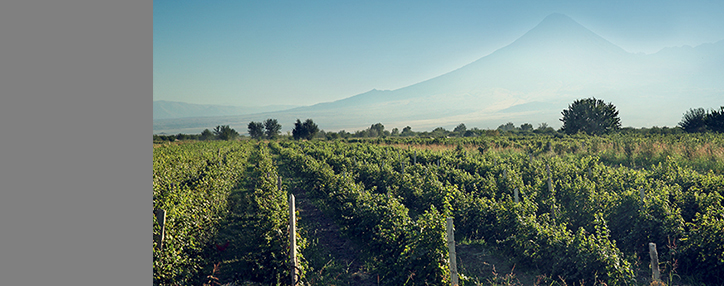Union of Armenian Winemakers: winemaking industry is booming
12.11.2019,
15:49
Armenia's winemaking industry has been booming throughout this year, the head of the Union of Armenian Winemakers Avag Harutyunyan stated on Monday.

YEREVAN, November 12. /ARKA/. Armenia's winemaking industry has been booming throughout this year, the head of the Union of Armenian Winemakers Avag Harutyunyan stated on Monday. He said preliminary data suggests that both production and export have grown by about 30%.
'We are on the verge of a winemaking revolution. There is great enthusiasm and major investments,” he said. According to Harutyunyan, some $20 million have been invested in this industry last and this year and in two years 25 new wine producers appeared.
“The year is very good in terms of viticulture and the grape crop, which is quite healthy. Unlike other years, the season has passed without serious incidents with last year's growth dynamics being repeated and relations between the government, buyers, and wine growers were normal,' Harutyunyan summed up the season.
According to him, last year some 117 thousand tons of grapes were purchased for the production of wine and brandy. He said according to preliminary data, some 140-150 thousand tons of grapes were purchased this year. As for prices, Harutyunyan said they were much higher than last year.
“The price per kilogram of grapes purchased for the production of cognac increased by 7 drams, and in the Ararat valley the price went up by 10-15 drams for red and white grapes for wine production. In Vayots Dzor, the price of red grapes has decreased, and the price of white grapes has almost halved compared to last year,” he said.
Speaking about the problems of the sphere, Harutyunyan said that the biggest problem is the lack of quality grapes for winemaking.
“Winemaking is developing faster than vineyards are planted, so today there is a shortage of grapes,” he stressed.
He also mentioned the problem of the rapid spread of phylloxera (microscopic louse or aphid that lives on and eats roots of grapes. It can infest a vineyard from the soles of vineyard worker's boots or naturally spreading from vineyard-to-vineyard by proximity), but to tackle the problem, about $ 600 million are needed to plant new vineyards that are resistant to these parasites. -0-
'We are on the verge of a winemaking revolution. There is great enthusiasm and major investments,” he said. According to Harutyunyan, some $20 million have been invested in this industry last and this year and in two years 25 new wine producers appeared.
“The year is very good in terms of viticulture and the grape crop, which is quite healthy. Unlike other years, the season has passed without serious incidents with last year's growth dynamics being repeated and relations between the government, buyers, and wine growers were normal,' Harutyunyan summed up the season.
According to him, last year some 117 thousand tons of grapes were purchased for the production of wine and brandy. He said according to preliminary data, some 140-150 thousand tons of grapes were purchased this year. As for prices, Harutyunyan said they were much higher than last year.
“The price per kilogram of grapes purchased for the production of cognac increased by 7 drams, and in the Ararat valley the price went up by 10-15 drams for red and white grapes for wine production. In Vayots Dzor, the price of red grapes has decreased, and the price of white grapes has almost halved compared to last year,” he said.
Speaking about the problems of the sphere, Harutyunyan said that the biggest problem is the lack of quality grapes for winemaking.
“Winemaking is developing faster than vineyards are planted, so today there is a shortage of grapes,” he stressed.
He also mentioned the problem of the rapid spread of phylloxera (microscopic louse or aphid that lives on and eats roots of grapes. It can infest a vineyard from the soles of vineyard worker's boots or naturally spreading from vineyard-to-vineyard by proximity), but to tackle the problem, about $ 600 million are needed to plant new vineyards that are resistant to these parasites. -0-



